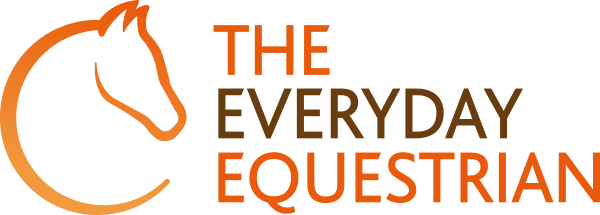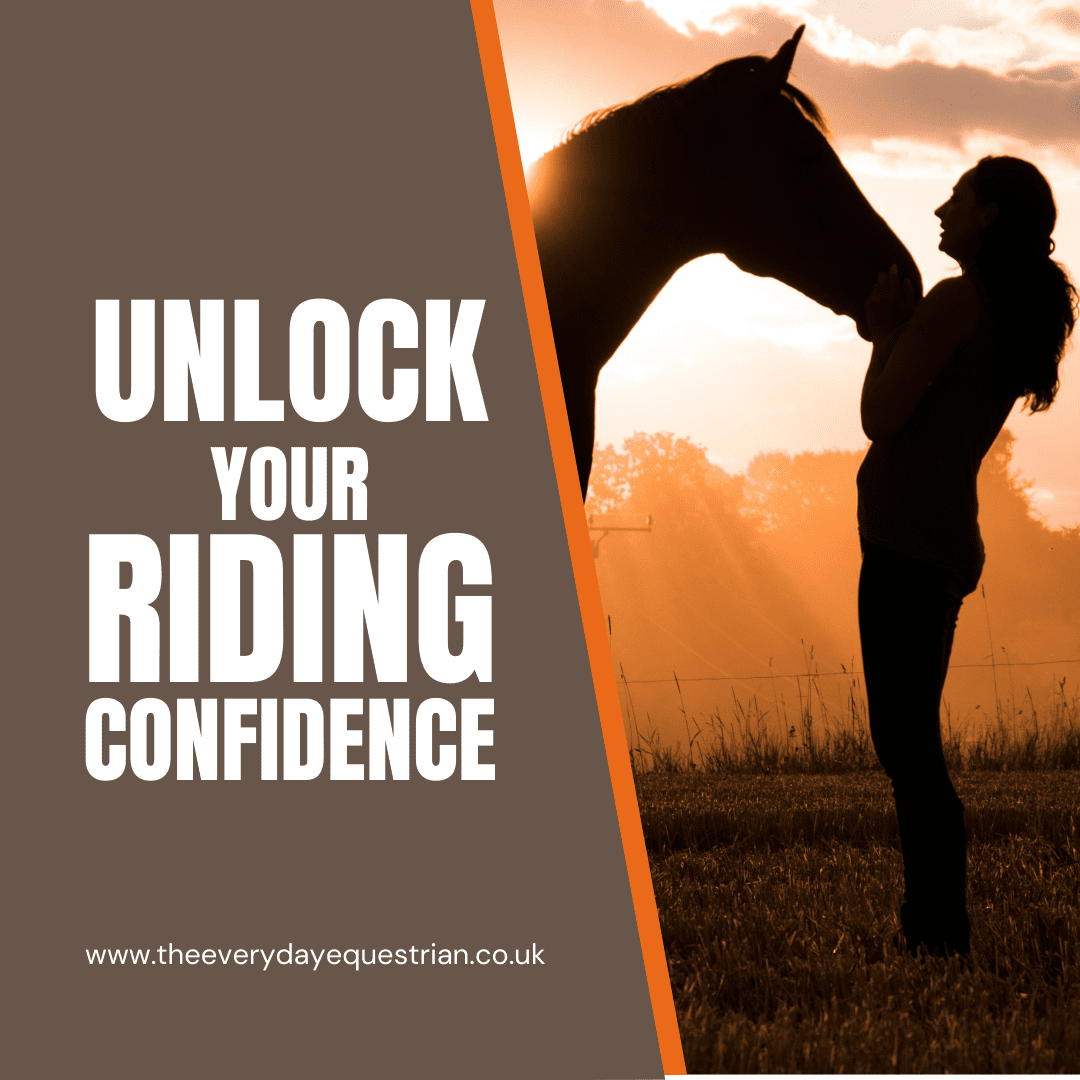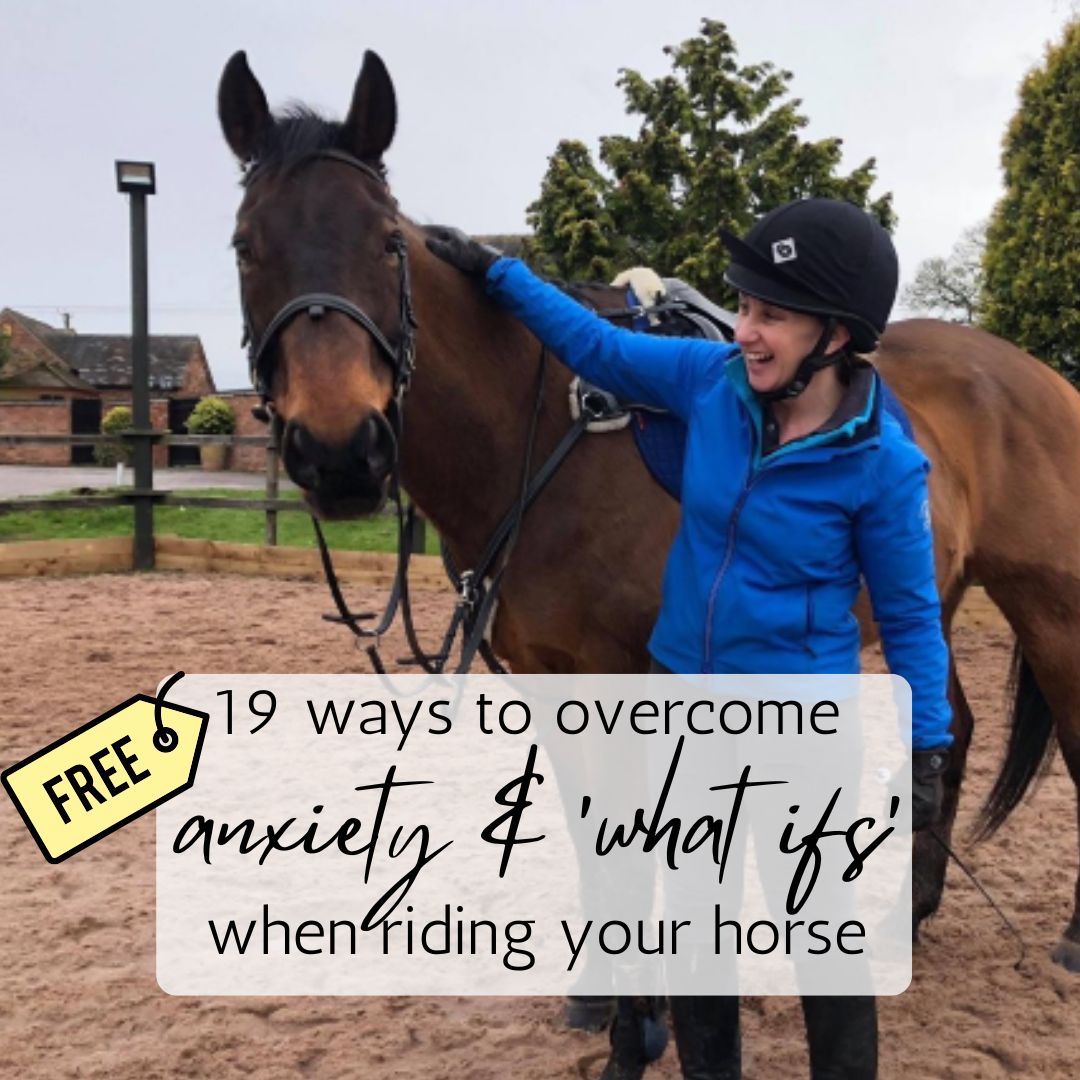Reasons riders get stuck with a lack of confidence
So often we get stuck in a negative head space and we find that we can only see the mistakes, the issues, and the moments that may have not gone to plan or not gone as we had hoped. And the thing is that our mind will default to finding the negatives. And actually, this default setting has a really positive intention, and that is to keep us safe.
So throughout human evolution, our mind has developed survival instincts, which means that any potential threat triggers our own flight, fight, or freeze response. Whether that’s actually appropriate or not. So our mind is always scanning for potential threats because had it not done that through evolution, we would not be sitting here today. It doesn’t matter at all to our minds. It doesn’t care whether a threat is real or it’s imagined, and this is really important because our mind will respond exactly the same. In other words, it will do everything it can to keep us safe, but the trigger for that flight, fight, or freeze response, doesn’t have to be real.
You could be using your imagination and imagining all the weird and wonderful things that could or might happen. The impact on us is that our minds will respond in exactly the same way because it’s a perceived threat… which is great if it’s a real threat, but if it’s an imaginary threat, that’s not so helpful, particularly when we’re sat on our horses.
But the good news is this is a perfectly human, normal, instinctive response. So if you are somebody who’s been experiencing those worries, those what ifs. Those negative thoughts, then I really want to reassure you, there’s nothing wrong with you! You are normally human. That’s a good thing, and you are functioning exactly as you should be.
All that’s happening is that you are inadvertently and unconsciously feeding your mind with all the imaginary scenarios and your mind responds with, “I need to keep you safe! So I’m going to do everything I can to make sure that I remove you from this situation, and I keep you in one piece!”.
That is the mind’s primary intention and we don’t want to mess with that, and that’s really important because when there is a real threat, we absolutely need to keep ourselves safe. So our mind is hugely powerful, and I know you already know this because I know you can imagine all the worst possible case scenarios, right? So how about we start putting our minds to better use?
Learn to focus on what you want
How about we start getting it working for us rather than against us? So I’d love you to imagine you are getting in your car and you want to go somewhere.
What’s the first question? The most obvious question is where are you going? If you can’t answer this question, when you get in your car, you’ll end up driving round and round around in circles not getting anywhere.
You’ll be wasting time and fuel, and nobody needs that right now, do they? You’ll be adding wear and tear to your car, and likely getting quite frustrated. You might even get stuck in traffic and you might even get lost completely.
However, if we were to get in the car and know with a hundred per cent clarity where we wanted to get to, we could use the postcode or the ‘What Three Words’, to identify the precise point we wanted to be and the precise destination we wanted to get to.
So what would we do if we knew our postcode? We knew where we needed to get to. We’d use Google Maps or our satnav to enter the details of our destination, and it would provide us with a really specific roadmap of how to get there, start our journey, knowing the roads, the turns, the junctions, the timeframe, and any alternative routes that we might want to take. All of that would be at our fingertips whenever we need them. So if we followed the guidance on our roadmap, or our satnav or our Google Maps, whatever it is that you use, we’d find our destination way more efficiently and be able to actually enjoy the journey. The pressure would be off. You’d taken a scenery, you’d take some pit stops from munchies along the way, and you’d take satisfaction and pride at how far you’d come along that journey.
So why am I telling you this? Funnily enough, this is exactly how our unconscious mind works. It works really hard to give us exactly what we tell it.
Our unconscious mind is always listening to our words, our thoughts, and our internal beliefs, and it takes them as absolute truth. So if we have an internal narrative around all the things that we dread, those things we really don’t want to happen, then our mind will take those stories at face value and provide us with opportunities to create those new unwanted realities.
So we stay stuck driving in endless circles, not getting anywhere, and often beating ourselves up for it. These patterns also reinforce any limiting beliefs that we have, such as, “I can’t”, if you’ve ever said that I have, I know I have. You’re not alone. “I can’t”. It’s really powerful in a really unhelpful way.
So how do we change this?
Choose your ‘desired destination’
I’m going to ask you to do something in a little while. I want you to explore and define your desired destination so that you can step out of those habitual thought patterns and explore new possibilities and opportunities to get to where you want to be. Remember, this is your desired destination.
It has to mean something to you so it doesn’t matter what anybody else’s desired destination might be. Some people might want to go and canter along the beach. Other people might want to go out on a hack on their own. Other people might want to simply be able to get on their horse and walk trot canter in an arena.
It doesn’t matter what anybody else’s desired destination is. What matters is that the desired destination you choose is something that means something to you. It has to light that fire in you. It has to be something that inspires you and would be your dream. Big, small, tiny, it really doesn’t matter because this is yours, nobody else’s.
So when you arrive at your destination, you’ll fill yourself up with excitement, joy, passion, fulfilment, and pride in yourself. Your destination will be absolutely compelling and feel like everything you ever dreamed of around riding.
It’s certainly not what you think you should do, rather than actually what you want to do.
What do you want? What do you want to be? What do you want to experience? What do you want to have? What do you want to enjoy? And there are no right or wrong answers here. It’s entirely up to you what the best version, the best experience of you as a rider will be like, and you get to define that as your destination.
So if you’d like to (finally) get rid of those mindset gremlins, to make real progress towards your equestrian goals, and learn how to become the most confident version of yourself, then I invite you to join my Crack the Confidence Code membership community. Click HERE to find out more.


